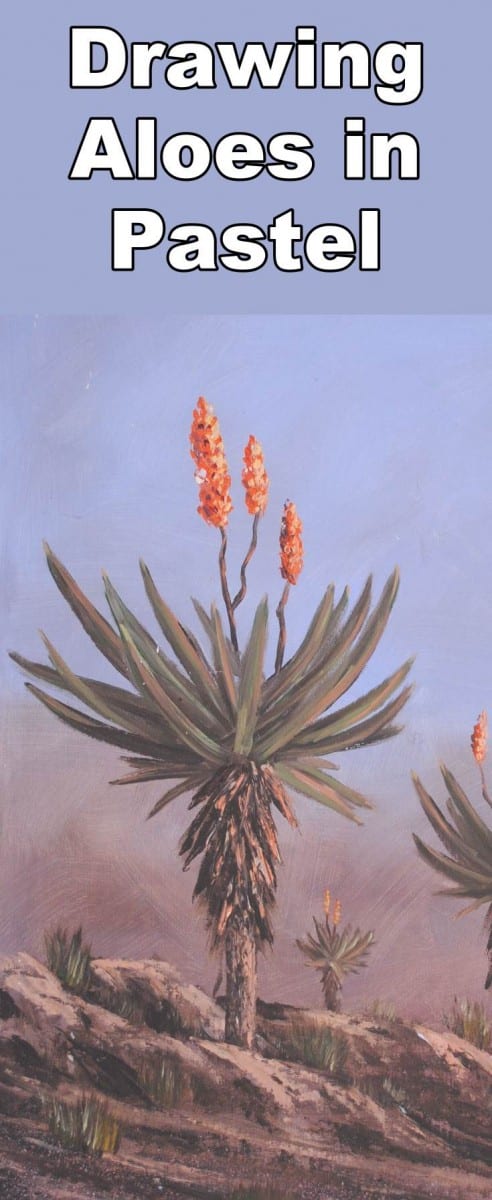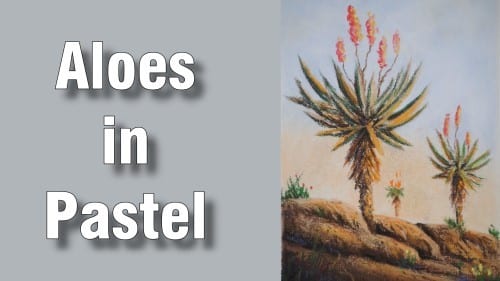Class Tutorial
Mats for pastel
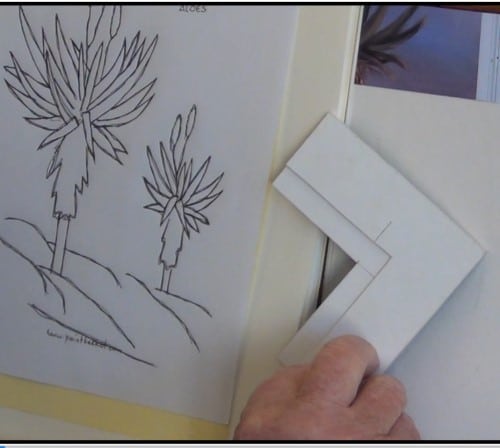
Pastel paintings need to be framed behind glass for protection. Pastel paintings also need to be matted differently to watercolour paintings because of the possible “loose dust” problem. The above picture indicates a pair of corners. This is a view on the back of the double mats. Normally they are placed the other way around. Here it is deliberately reversed in order to show the “catching trough” to collect any loose dust that may fall during handling. This dust will fall out of sight and not on the front of the mat.
Painting the background (sky)
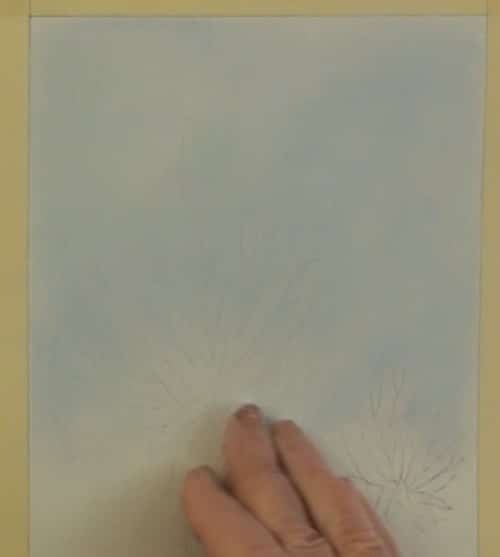
With a soft white pastel stick rub it all over the background. This help the blending when the next colour is used. After this, lay a light blue layer over this white dust. With tip of your finger, merge it evenly. Over this overlay a very light layer of yellow and blend softly.
Lower sky
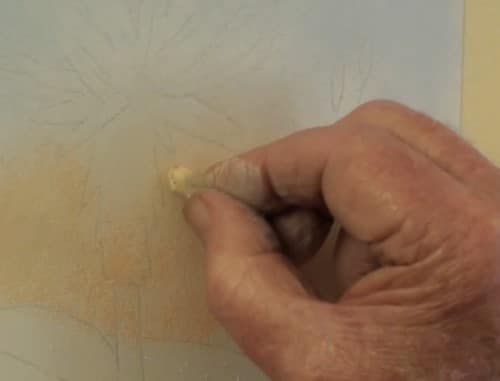
A very light pinkish colour is now applied in the lower area of the sky to give the horizon a soft glow.
Painting the flowers
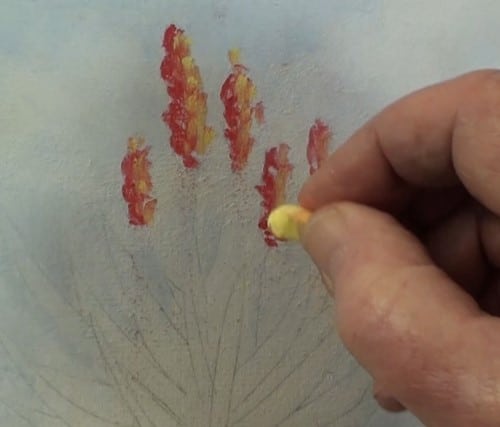
Paint the flowers using a bright red pastel stick. Do it in a dotted fashion to indicate the smaller flowers. As the light is coming from the right, spot in the bright side with cadmium yellow or similar. The reference photograph show three flowers. We will, however, add five of them.
Paint the stalks
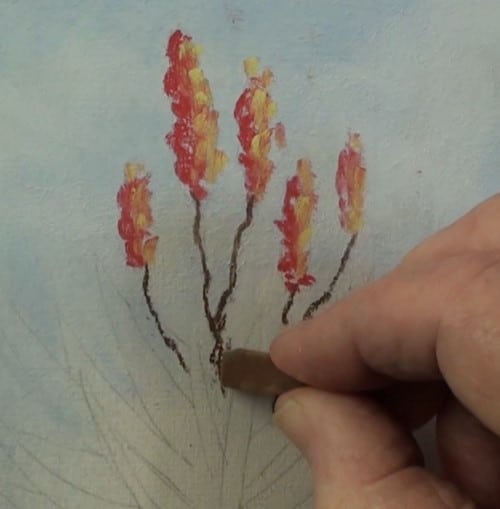
With the edge of a light brown pastel stick, carefully “wiggle” in the stalks.
Paint the other aloe flowers
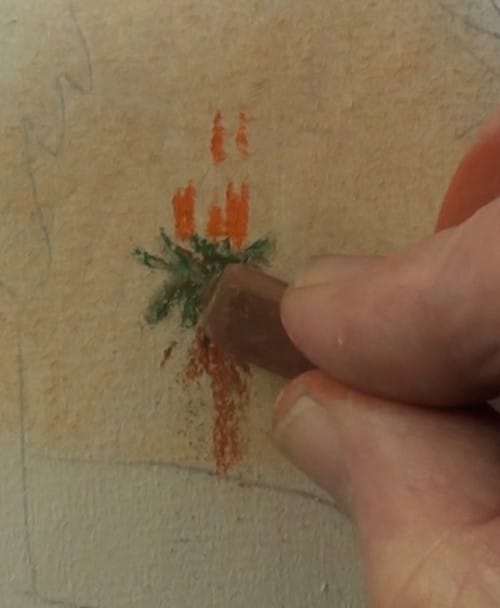
The other aloe flowers are painted in with the same colours as used in the main aloe. For the smaller, more distant, aloe use an orange colour instead of the red.
The main aloe leaves
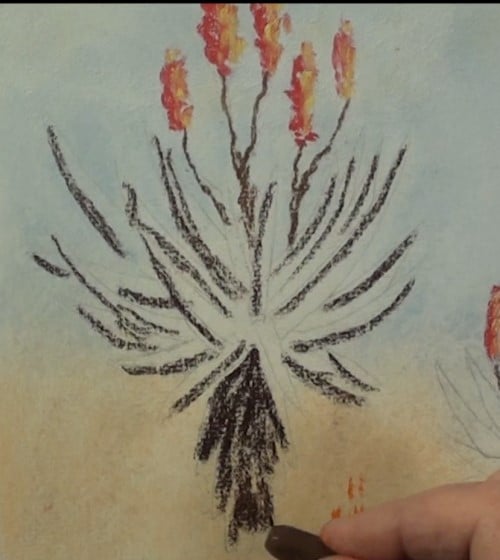
Begin by painting in all the shadows with a dark brown colour.
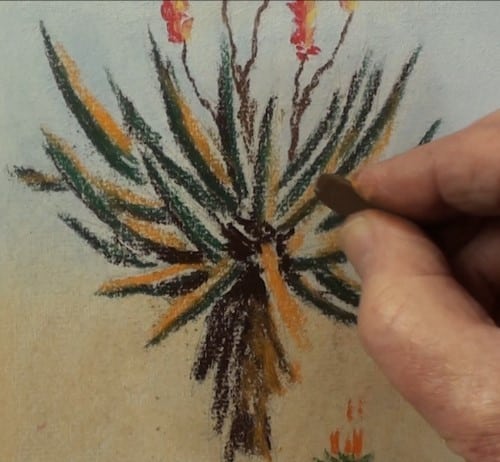
With a yellow ochre stick, add in all the sunlit colour above the shadow lines. With a dark green, go over the shadow lines. This will produce a very dark green.
Paint the withered leaves
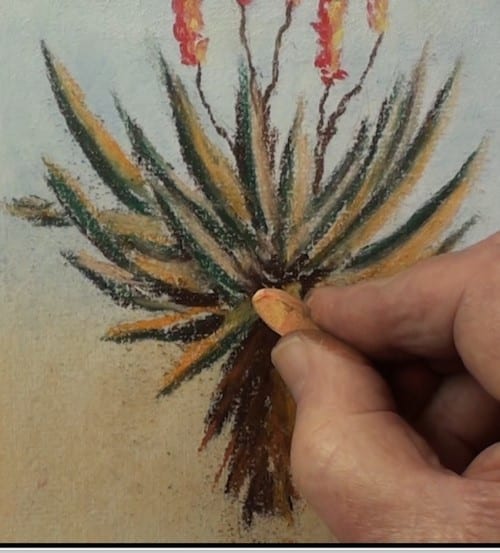
With a burnt sienna, paint the dried leaves, and then some yellow ochre on the sunlit side.
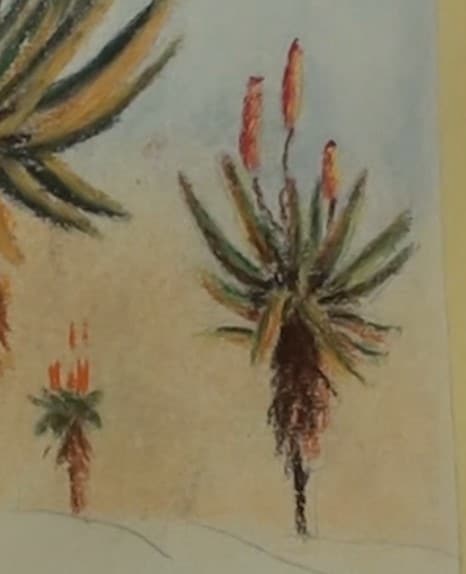
Complete the other two aloes in a similar fashion.
Paint the embankment
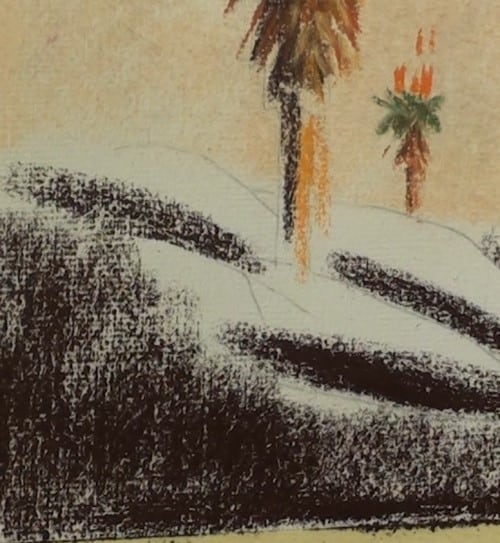
With a dark brown lay in all the dark portions of the embankment. Then lay in the lighter areas with a yellow ochre, Naples yellow or similar and gently blend.
Painting the texture
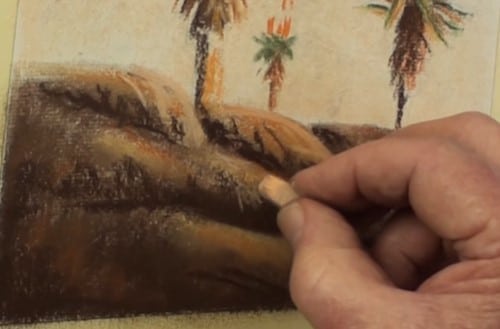
Carefully start drawing in the dark shadows as well as all the small cracks, etc. with the edge of the stick. It is not necessary to copy all the markings exactly. Just try to get it more or less similar. With a lighter colour also add the minor highlights to add a little bit of sparkle.
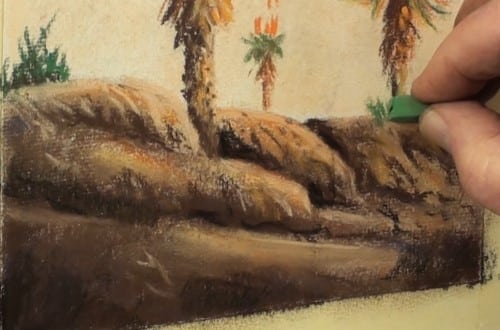
Add in a few grasses for interest to make it look more natural.
Touch up the aloes
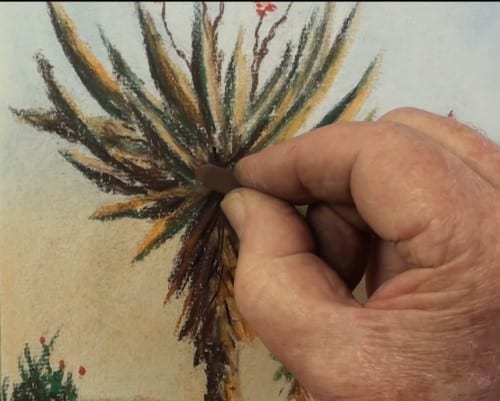
Touch up the aloes and add the dark centres, and some highlights as well.
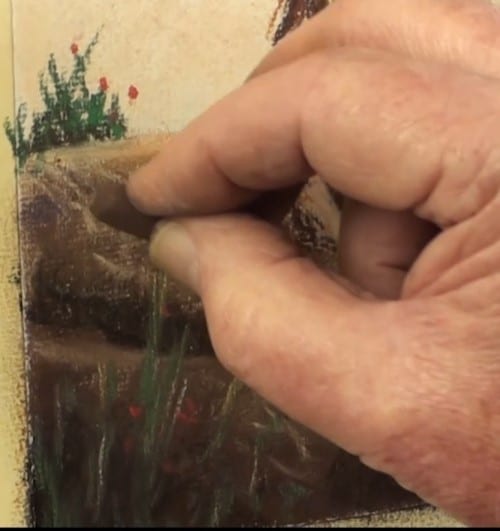
Also paint in a few tall grasses at the base of the embankment, and some on the side.
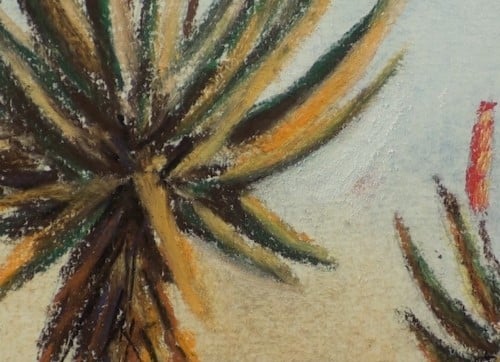
Blend in the leaf area as a final action.
Final painting
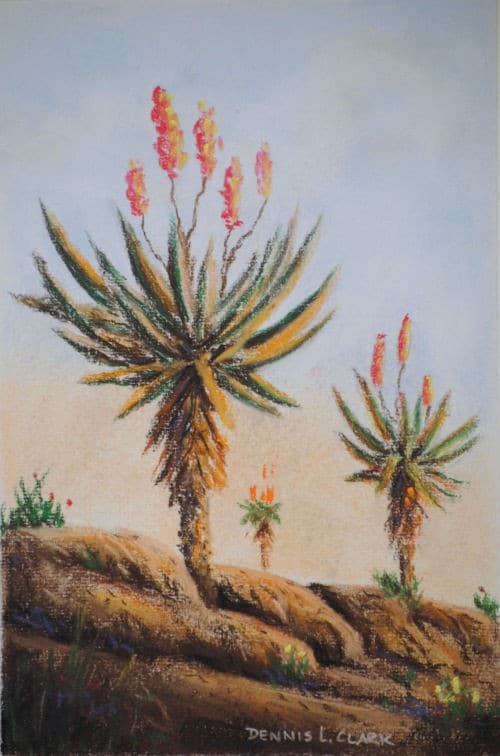
Click the button below to view the real time follow along version of this class:
Pin Me
